Have you ever listened to a guitar solo and wondered how the artist manages to make those pitch-bending notes sing so effortlessly? There’s a secret weapon beneath those electrifying riffs—a marvel of design that few fully understand until they’ve had the chance to play with one themselves: the floating bridge. As an engineer turned luthier, my fascination with the floating bridge guitar has been a journey of discovery, from its intricate mechanics to its profound impact on a musician’s performance. In this guide, we’ll delve into the world of floating bridges and explore their unique function, how to master their tuning, and the crucial maintenance practices that keep them in top shape.
Through years of crafting and tuning these instruments, I’ve come to appreciate not only their technical prowess but also how they can transform both sound and style for artists across genres. Together, let’s uncover the secrets that make floating bridge guitars a beloved choice for guitarists seeking that distinctive edge.
What is a Floating Bridge Guitar?
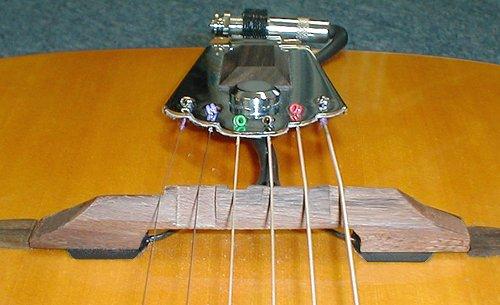
In my journey through lutherie since 1994, I’ve encountered a myriad of bridge designs. Among these, the floating bridge holds a *noteworthy position* for its remarkable ability to enhance both *playability and sustain*. Floating bridge guitars are characterized by a bridge that isn’t fixed to the top of the guitar; instead, it relies on *tension from the strings* to remain in place. This design introduces a distinct level of flexibility and creativity that sets it apart from other bridge types.
Did you know that the floating bridge can actually influence the tonal qualities of a guitar significantly? By allowing the entire bridge unit to move, it provides a naturally vibrant sustain and a variety of tonal possibilities that can be altered with the touch of a fingertip. This is accomplished through the intricacies of the *tremolo system*, which in many floating bridges, allows for smooth pitch bending and vibrato effects — features highly sought after by many musicians for their expressive potential.
As someone who has fitted countless guitars with floating bridges over the decades, I’ve come to appreciate them not just as pieces of hardware, but as *engineering marvels*. The balance they strike between firm anchoring and subtle movement requires careful setup and maintenance. It’s this delicate dance that offers guitarists an unparalleled level of *expressive artistry*, a testament to the floating bridge’s enduring appeal in the world of guitar design.
Why Use a Floating Bridge?
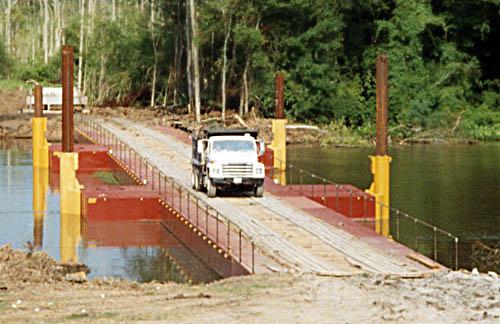
Imagine a guitar that not only stays in tune but also elevates your playing to new heights—sounds tempting, right? Throughout my experience in instrument design, I’ve seen firsthand the advantages that floating bridges bring to the table, especially in terms of tuning stability and dynamic range. These features can really open up a player’s creative possibilities. It’s a transformative element of guitar design that compels any player to reconsider the scope of their musical expression.
The versatility offered by a floating bridge allows for pitch change capabilities that were simply unattainable with more traditional setups. Whether you’re bending notes for that perfect blues lick or creating atmospheric soundscapes with subtle tremolos, a floating bridge makes it possible to explore a broader harmonic spectrum. This capability isn’t just about adding flair to your performance; it’s about providing a tool that expands your musical vocabulary.
Additionally, floating bridges enable more intricate guitar modifications, facilitating custom setups that cater specifically to your playing style. Whether you’re a professional musician carving out unique tonal pathways or an enthusiast eager to experiment, the adaptability of a floating bridge can guide you toward new creative destinations. It’s this blend of stability and flexibility that makes the floating bridge a cornerstone in the evolution of guitar technology.
How to Tune a Floating Bridge Guitar
Tuning Stability Techniques
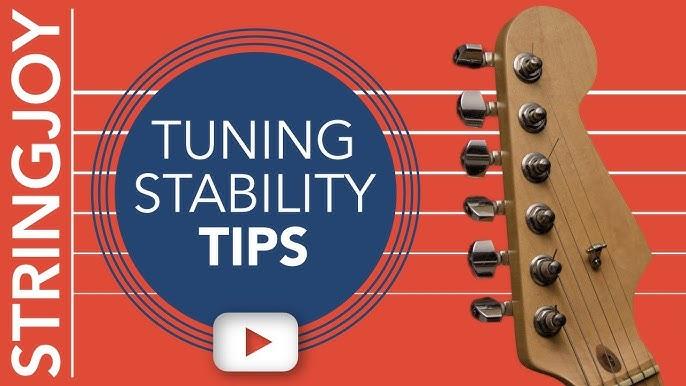
Many guitar players overlook the intricacies of maintaining tuning stability on floating bridge guitars. However, it’s crucial to ensure that these complex mechanisms are set up correctly to keep the instrument in tune. After making any adjustments, whether you’re experimenting with string gauges or adjusting spring tension, achieving stable tuning requires attention to detail. My background in engineering has equipped me with a unique perspective, enabling me to develop techniques that enhance stability.
One important trick involves the locking tremolo system. By properly setting and locking the nut, you can significantly reduce string slippage during heavy tremolo use. Additionally, balancing the spring tension against string tension is vital; it creates equilibrium, reducing the risk of pitch fluctuations. These adjustments allow musicians to focus on their craft without the frustration of constant retuning, making the floating bridge a reliable and expressive tool. Mastering these techniques ensures a smoother transition to identifying and addressing common tuning issues, discussed in the following section.
Common Tuning Issues

In my years of working with lutherie, I’ve encountered almost every tuning issue imaginable, especially when it comes to the intricate floating bridge mechanism. This type of bridge, while providing unique tonal advantages, can often lead to frustrating pitch changes if not properly managed. The first step in identifying common tuning problems is recognizing their symptoms, such as strings going flat or sharp after using the tremolo arm. These issues often stem from incorrect string tension or improperly balanced springs within the bridge assembly.
To improve tuning stability, assess the tension balance between the guitar strings and the floating bridge’s springs. Adjusting this balance usually addresses most tuning inconsistencies. Furthermore, paying attention to the nut and bridge lubrication can significantly reduce friction that might cause abrupt pitch change during play. By understanding the fundamental dynamics of the floating bridge, you can implement effective solutions and prevent future tuning problems. This proactive approach does more than just maintain your instrument—it enhances your playing experience, reflecting a deep respect for both craftsmanship and performance.
Maintenance Tips for Floating Bridge Guitars
Regular Maintenance Practices
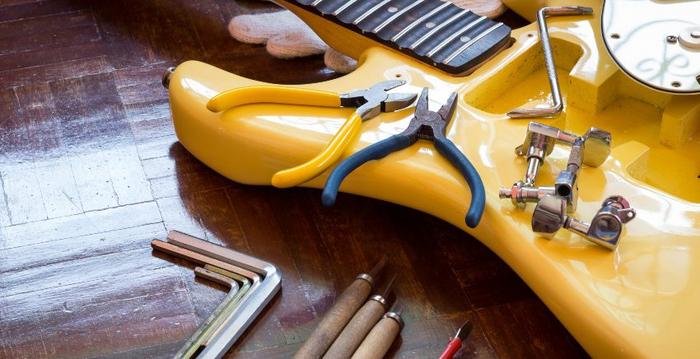
With decades of experience designing instruments, I know that routine maintenance is essential for keeping a floating bridge guitar in top form, akin to regularly servicing a finely-tuned machine. Regular checks are about preserving sound quality and preventing wear that could compromise performance. A critical step is to inspect all mechanical parts, ensuring screws and springs are snug and free from rust. Keeping things clean and lubricated can make adjustments precise and extend the life of your gear.
Regular string changes are necessary not just for optimal sound but also to reduce tension on the floating bridge, allowing it to maintain its proper alignment. Taking a few moments each month to check for fret wear and neck alignment can prevent larger issues down the line. These proactive measures in guitar maintenance and guitar setups ensure your instrument is always ready to deliver its best performance, becoming your trusted companion on every musical journey.
Troubleshooting Common Issues

From my extensive work in the field, diagnosing issues with floating bridges has become second nature. Acknowledging the relevance of troubleshooting common issues plays a pivotal role in maintaining the performance and longevity of your floating bridge guitar. The sophistication of the tremolo system can lead to some unique challenges, but armed with knowledge, you can tackle them effectively.
One prevalent issue involves the bridge not returning to its original position after using the tremolo bar, leading to tuning instability. This can often be traced to an imbalance in the tremolo springs or alterations from recent guitar modifications. To resolve this, ensure the springs are properly tensioned and evenly distributed, which will help the bridge maintain equilibrium.
Another frequent problem is excessive fret buzz, which might indicate misalignment in bridge height. Adjusting the bridge posts or screws can often alleviate this issue. By identifying and addressing these challenges, you not only maintain your instrument but also foster a deeper relationship with it, enhancing both playability and sound quality. Let’s move forward into applying these troubleshooting insights to bolster your regular maintenance practices.
Conclusion
As we conclude, have you realized the hidden potential of your floating bridge guitar? Throughout this guide, we’ve explored the fascinating world of floating bridges, from their intricate mechanics to their stunning versatility in sound and style. Floating bridge guitars offer a dynamic range that can transform your music, provided you understand their unique tuning and maintenance needs.
Reflecting on my journey, floating bridge guitars have always been a pivotal point of interest. Their complexity and beauty are worthy of both appreciation and responsible stewardship. By mastering proper guitar maintenance, addressing tuning stability with precision, and troubleshooting common issues, we ensure these instruments remain in optimal condition. Remember, regular maintenance practices are key to unlocking the full potential of your guitar, allowing for a lifetime of rich sound and performance.
Embrace the challenge and reward of owning a floating bridge guitar. With dedication and care, you can transform these intricate instruments into the backbone of your musical expression.
FAQs
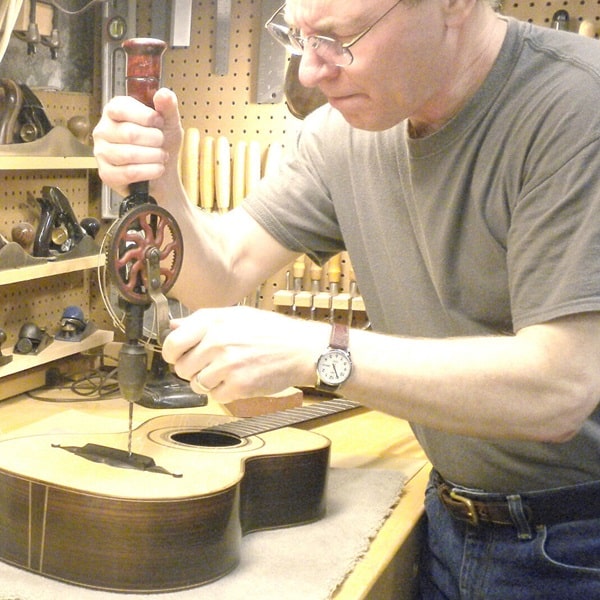
R.M. Mottola, an engineer-turned-luthier, revolutionizes stringed instrument design with his deep focus on acoustics and ergonomics since 1994. As editor of the Savart Journal and a key contributor to American Lutherie, Mottola merges science with artistry in lutherie. He enriches the field with his extensive knowledge, shared through his Liutaio Mottola website, making him a beacon in the world of modern instrument craftsmanship.
